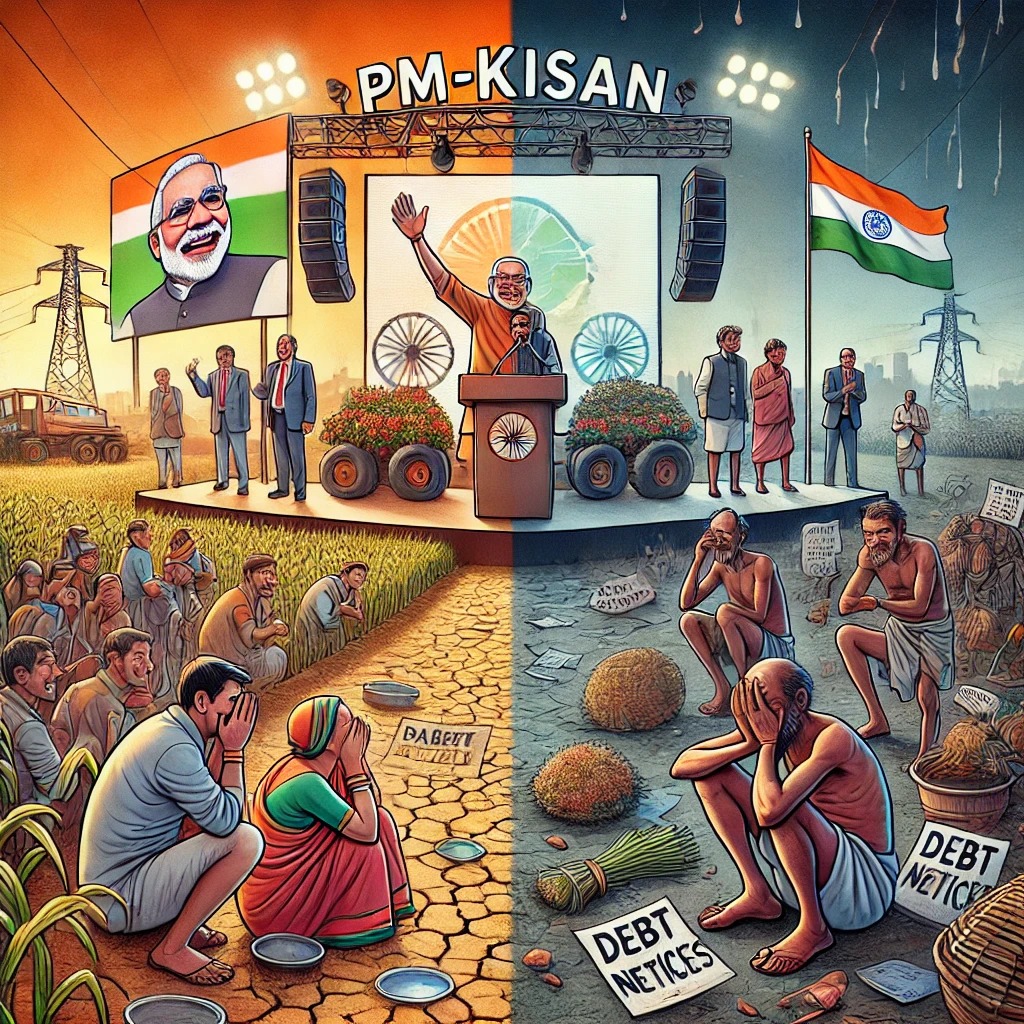
On this day in 2019, Prime Minister Narendra Modi launched the Pradhan Mantri Kisan Samman Nidhi (PM-KISAN) scheme in Gorakhpur, aiming to provide financial assistance to small and marginal farmers. However, the scheme’s implementation has been marred by criticisms, particularly regarding the timing of fund disbursements, which often coincide with election periods, raising questions about its true intent.
The inaugural installment of PM-KISAN was disbursed to over one crore farmers just before the 2019 Lok Sabha elections. This pattern has persisted, with the 18th installment released in October 2024 and the 19th installment scheduled for February 24, 2025, during the election season. Notably, Prime Minister Modi is set to release these funds during a visit to Bhagalpur, Bihar, a state with impending elections. Such strategic timing suggests that the scheme may serve more as an electoral tool than a genuine welfare initiative.
Beyond the questionable timing, PM-KISAN faces significant operational challenges. The annual financial support of ₹6,000, distributed in three installments, is often deemed insufficient to offset the escalating costs of agricultural inputs. This inadequacy forces many farmers to divert these funds toward non-agricultural expenses, undermining the scheme’s primary objective. Additionally, frequent changes in compliance criteria have disrupted payments to deserving families, while the absence of comprehensive data on farmer suicides hampers the assessment of the scheme’s impact on alleviating farmer distress.
In the 2025 budget, the government increased the scheme’s allocation to ₹63,500 crore. While this appears promising, it doesn’t address core issues such as insufficient financial support and the need for targeted interventions. Speculations about raising the annual installment amount to ₹10,000 or ₹12,000 remain unconfirmed, leaving farmers in a state of uncertainty. Moreover, the scheme’s broader effectiveness in enhancing farmer livelihoods continues to be a topic of debate.
In conclusion, while PM-KISAN has provided some financial relief, its alignment with election cycles and operational inefficiencies cast doubt on its credibility as a welfare measure. To truly benefit the agricultural community, the scheme requires a comprehensive overhaul, including improved beneficiary identification, increased financial support, and integration with other agricultural initiatives. Without these reforms, PM-KISAN risks being perceived more as an electoral strategy than a substantive effort to uplift India’s farmers.




